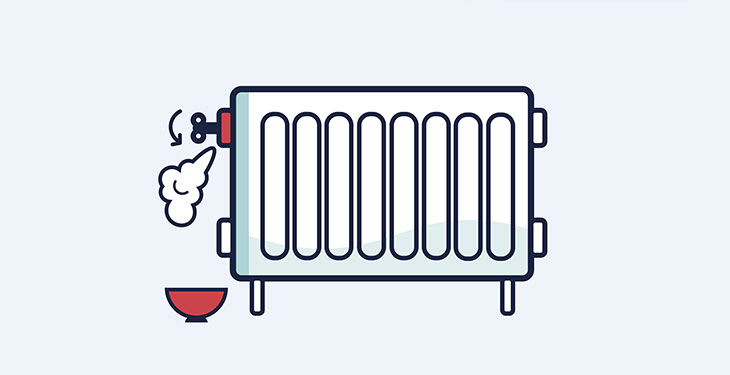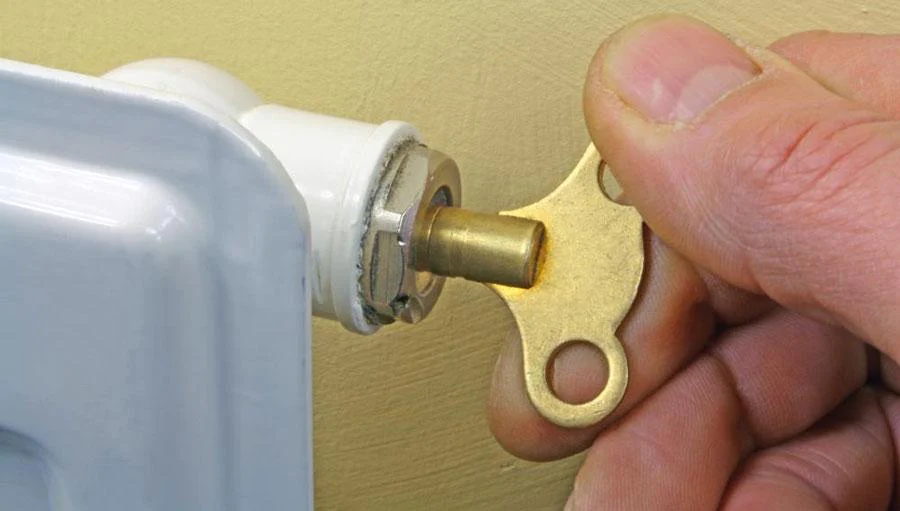
If you’re like most homeowners, the thought of bleeding a radiator probably seems scary. But let me tell you, it’s not as scary as it sounds! In fact, bleeding your radiators can be a quick and easy way to improve the efficiency of your heating system and save you money on your energy bills.
Think about it this way: your heating system is like a marathon runner. When everything is working properly, it’s in a steady state of motion, pumping hot water through your radiators and keeping your home warm and cosy. But over time, air can get trapped in the system, causing your marathon runner to stumble and slow down. Bleeding your radiators is like giving your marathon runner a much-needed boost of energy, helping it run more efficiently and effectively.
But there’s more to it than just saving money on your energy bills. Regularly bleeding your radiators can help prevent rust and corrosion in your heating system, extend the life of your radiators, and even make your home more comfortable by ensuring that each radiator is heating up properly.
So, if you’re ready to give your heating system a boost and start saving money on your energy bills, let’s get started on learning how to bleed a radiator!
What is a radiator bleed valve and where to find it

Okay, so you’re ready to bleed your radiators, but first things first, let’s talk about what the heck a radiator bleed valve is. Essentially, it’s a small valve at the top of your radiator that’s used to release any trapped air in the system. It’s a tiny little thing, but it packs a big punch when it comes to keeping your heating system running smoothly.
Now, you might be wondering, “But where the heck do I find this bleed valve thingy?” Well, that’s the easy part. It’s typically located at the top of your radiator and it’s usually a small knob or screw that’s painted the same colour as your radiator. Sometimes it’s a little bit harder to spot, so keep an eye out for a small, round or hexagonal-shaped valve at the top of your radiator.
In case you’re still having trouble locating it, a quick tip is to look for a small square or hexagonal shape on the head of your bleed valve, which is a common design to help you identify it. And if you’re still stumped, consult the manual of your radiator or consult with a professional for more guidance.
Once you’ve located the bleed valve, it’s time to get ready to give your heating system the boost it needs. But before you start twisting and turning valves, make sure you turn off the power supply to your heating system for safety reason. Trust us, you don’t want to be messing with hot water and electricity at the same time!
Step-by-step instructions for bleeding a radiator
Alright, so you’ve located the bleed valve and turned off the power to your heating system. Now it’s time to get down to business and bleed that radiator! But before you start, here’s a list of things you’ll need:
- A radiator key (this is a small tool that’s used to open the bleed valve)
- A towel or rag (to catch any water that may escape when you open the valve)
- A bucket (to catch any water that escapes from the towel or rag)
Got everything you need? Great! Let’s get started.
- First things first, make sure that your heating system is turned off and that the room is well ventilated. Then, place your towel or rag under the bleed valve to catch any water that may escape when you open the valve.
- Now, take your radiator key and insert it into the bleed valve. Turn the key clockwise to open the valve. You’ll hear a hissing sound as the air escapes from the system.
- Once the hissing stops, you’ll see water start to come out of the bleed valve. This is totally normal, so don’t freak out! Just make sure to keep your towel or rag handy to catch the water.
- Let the water run until it’s clear, this means all the trapped air is out, then close the valve by turning the key anti clockwise.
- Now check the towel or rag to see how much water came out, if it’s just a small amount, you’re good to go. But if it’s a lot, it may be a sign that you have a leak somewhere in the system, so you might want to get that checked out by a professional.
- Repeat the process for the other radiators in your home.
And that’s it! You’ve successfully bled your radiator. Wasn’t that easy? By doing this simple task, you’ve given your heating system a boost and you’re on your way to saving money on your energy bills.
Bonus Tip: Maintaining your heating system and checking radiators
Now that you know how to bleed your radiators, it’s important to remember that regular maintenance is key to keeping your heating system running smoothly. Here’s a bonus tip for keeping your heating system in tip-top shape: schedule an annual check-up with a professional.
A professional can inspect your entire heating system, from the boiler to the radiators, and can check for any potential issues that you might not be able to spot on your own. They can also give you advice on how to best maintain your system and keep it running efficiently. It’s kind of like a regular check-up for your heating system, just like how you would schedule regular check-ups for your car or yourself.
Additionally, in between those annual check-ups, you can also keep an eye out for any leaks or rusts in the system. Leaks can be caused by worn out or damaged pipes, and rust can indicate corrosion in the system. These issues can lead to bigger problems down the road if they’re not addressed, so it’s important to keep an eye out for them and address them as soon as possible.
By following these tips, you’ll be able to keep your heating system running efficiently and prevent any major issues from arising. Just like keeping your car in good condition, your heating system too requires regular check-ups and maintenance, so that you and your loved ones can stay warm and cozy during the cold winter months.
